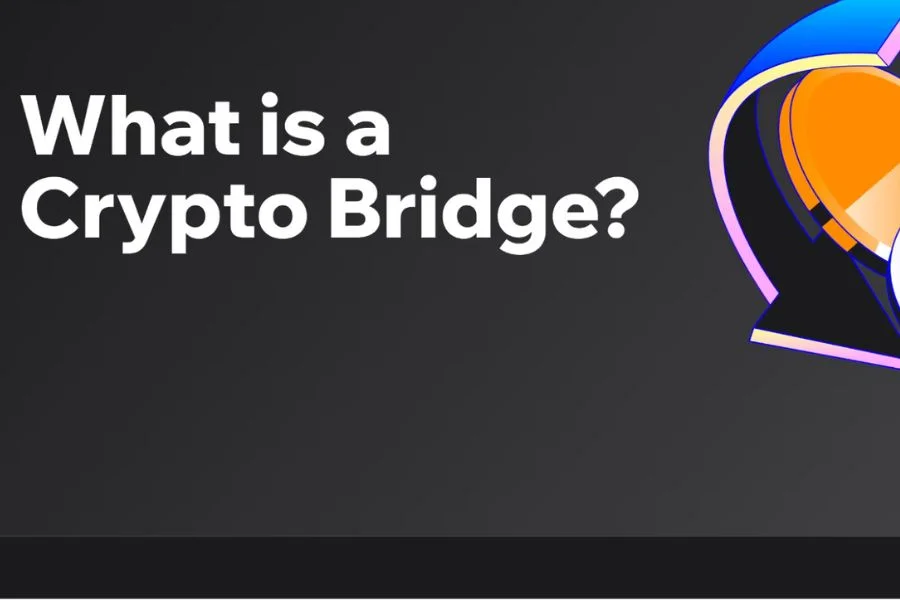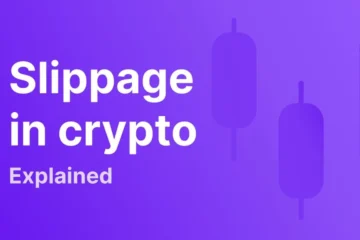A crypto bridge is like a digital ferry that lets your tokens travel between different blockchains. In a world where crypto assets reside on separate “islands” like Ethereum, BNB Chain, or Solana, bridges enable the transfer of value across them without relying on centralized exchanges. This guide breaks down what a blockchain bridge is, how cross-chain transfers work, and the benefits and risks you need to know.
Table of Contents
Understanding the Problem: Blockchains Don’t Talk to Each Other
Blockchains are powerful but isolated systems. Ethereum can’t directly read what’s happening on Solana, and Bitcoin has no idea what’s going on over at Polygon.
This creates a challenge for investors and developers who want to move assets between chains without selling them and buying them back elsewhere — a process that’s often slow, costly, and risky.
What Is a Crypto Bridge?
A crypto bridge (also called a blockchain bridge or cross-chain bridge) is a protocol that enables the transfer of tokens, data, or assets between two different blockchains.
Think of it like a translator who can speak both “Ethereum” and “Polygon” and can pass your message — in this case, your tokens — safely from one to the other.
Also Read: How to Read Crypto Charts for Beginners: Candlesticks, Trends & More
Bridges can be:
- Centralized – Operated by a single entity (faster but trust-dependent)
- Decentralized – Powered by smart contracts (more transparent but vulnerable to bugs)
How Cross-Chain Transfers Actually Work
Let’s say you have 1 ETH on Ethereum and you want to use it on Polygon.
- Locking Assets on the Source Chain – The bridge’s smart contract locks your 1 ETH on Ethereum so it can’t be spent twice.
- Minting Wrapped Tokens on the Destination Chain – The bridge mints a “wrapped” version of ETH (like WETH) on Polygon that represents your original ETH.
- Redeeming Back to the Original Chain – When you want your ETH back, the wrapped tokens are burned on Polygon, and the original ETH is unlocked on Ethereum.
This process avoids physically moving ETH between chains — instead, it’s all about creating a secure “representation” of your asset on the new network.
Why Use a Blockchain Bridge?
- Access to Cheaper Fees – Move assets to a chain with lower gas costs.
- More Investment Opportunities – Participate in DeFi projects, NFTs, or yield farms that exist only on certain chains.
- Interoperability for Developers – Build apps that can tap into liquidity across multiple ecosystems.
Also Read: Understanding Gas Fees on Ethereum: Why Are They So High?
The Risks of Using a Crypto Bridge
While bridges unlock a lot of possibilities, they’re also among the biggest hacking targets in crypto.
- Smart Contract Bugs – Coding errors can be exploited.
- Validator Risks – If the bridge relies on centralized validators, a compromise could drain funds.
- Fake Bridges – Scammers create lookalike websites to steal assets.
Billions of dollars have been lost to bridge hacks in recent years, making security a top concern.
Popular Examples of Crypto Bridges
- Polygon Bridge – Connects Ethereum to Polygon’s network
- Wormhole – Supports multiple chains, including Solana, Ethereum, and BNB Chain
- Binance Bridge – Used for moving assets between Binance’s chain and others
- Avalanche Bridge – Designed for fast, low-cost asset transfers to Avalanche
The Future of Cross-Chain Bridges
As blockchain ecosystems grow, bridges will play a bigger role in making them interoperable. However, future designs may shift toward more trustless, secure, and user-friendly solutions, such as zero-knowledge proofs and layer-zero protocols.
Conclusion
A crypto bridge is a crucial tool for transferring assets between blockchains, but it also presents both opportunities and risks. Whether you’re chasing lower fees, trying new DeFi platforms, or exploring NFTs on another chain, always do your research and use trusted bridges — because once your tokens fall into the wrong wallet, there’s no crossing back.




